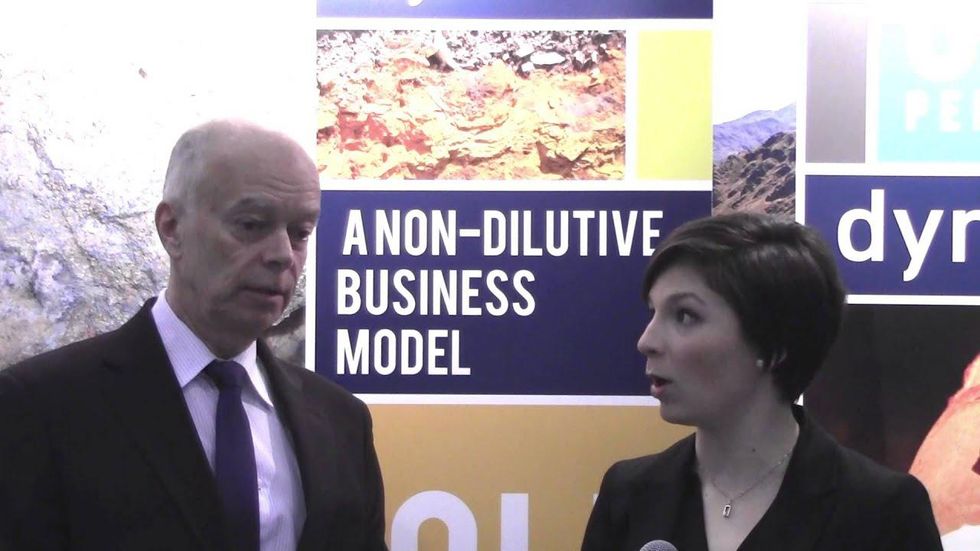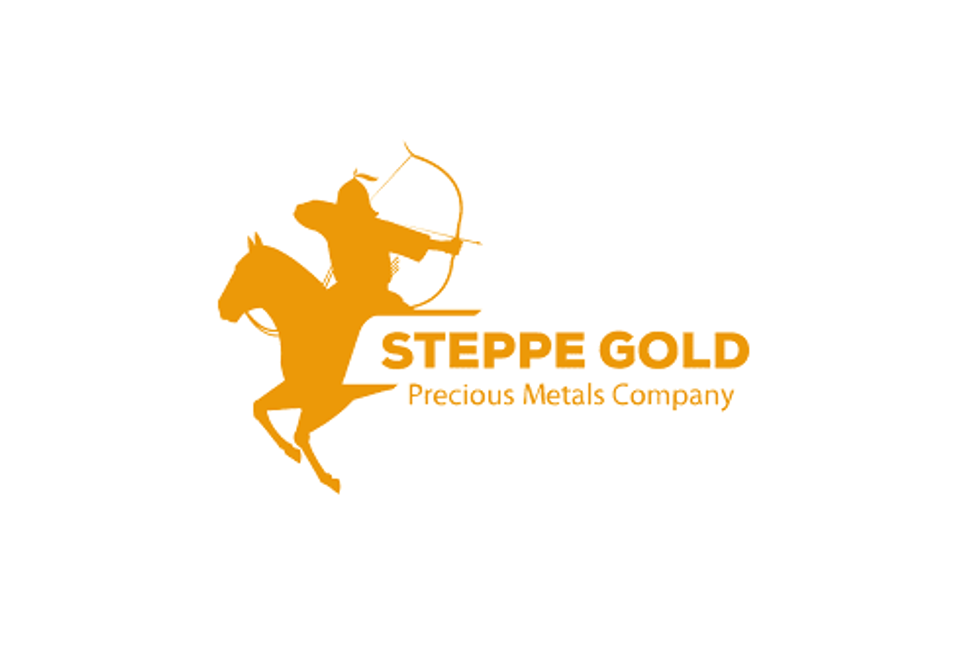- AustraliaNorth AmericaWorld
Investing News NetworkYour trusted source for investing success
- Lithium Outlook
- Oil and Gas Outlook
- Gold Outlook Report
- Uranium Outlook
- Rare Earths Outlook
- All Outlook Reports
- Top Generative AI Stocks
- Top EV Stocks
- Biggest AI Companies
- Biggest Blockchain Stocks
- Biggest Cryptocurrency-mining Stocks
- Biggest Cybersecurity Companies
- Biggest Robotics Companies
- Biggest Social Media Companies
- Biggest Technology ETFs
- Artificial Intellgience ETFs
- Robotics ETFs
- Canadian Cryptocurrency ETFs
- Artificial Intelligence Outlook
- EV Outlook
- Cleantech Outlook
- Crypto Outlook
- Tech Outlook
- All Market Outlook Reports
- Cannabis Weekly Round-Up
- Top Alzheimer's Treatment Stocks
- Top Biotech Stocks
- Top Plant-based Food Stocks
- Biggest Cannabis Stocks
- Biggest Pharma Stocks
- Longevity Stocks to Watch
- Psychedelics Stocks to Watch
- Top Cobalt Stocks
- Small Biotech ETFs to Watch
- Top Life Science ETFs
- Biggest Pharmaceutical ETFs
- Life Science Outlook
- Biotech Outlook
- Cannabis Outlook
- Pharma Outlook
- Psychedelics Outlook
- All Market Outlook Reports
Jean Martineau: How Dynacor Finances Exploration Without Dilution
Dynacor Gold Mines has an interesting approach to gold mining: rather than mining ore itself, it purchases ore for processing from other miners in Peru. Since Dynacor was mentioned in a presentation by Louis James at the recent Vancouver Resource Investment Conference, Resource Investing News made sure to speak to Jean Martineau, president and CEO of Dynacor, at the 2015 PDAC conference in Toronto.
Dynacor Gold Mines (TSX:DNG) has an interesting approach to gold mining: rather than mining ore itself, it purchases ore for processing from other miners in Peru while also maintaining an exploration arm.
Since Dynacor was mentioned in a presentation by Louis James at the recent Vancouver Resource Investment Conference, Resource Investing News made sure to speak to Jean Martineau, president and CEO of Dynacor, at the 2015 PDAC conference in Toronto.
To start, Martineau gave a brief overview of how Dynacor’s model works and how the processing side of the business helps to finance exploration, stating that Dynacor’s approach means it is less sensitive to the gold price. “It’s a way to finance the company without continuous dilution in the market,” he said.
In terms of challenges related to Dynacor’s model, Martineau admitted that the company at first had to compete with a number of privately owned mills in Peru. Furthermore, he conceded that it is difficult to process ore from a number of different mines with the same mill. However, he said that over the years, Dynacor has been able to up its recovery rate from the mill to nearly 95 percent, which has been a big part of the company’s success.
Martineau also spoke about Dynacor’s progress at its Tumipampa exploration project, at which it recently kicked off a new exploration campaign, and finished up with some interesting comments on illegal mining in Peru and how that affects Dynacor’s operations.
Check out the video below for more of what the CEO had to say.
Interview Transcript
RIN: I am Teresa Matich with Resource Investing News. Here with me today is Jean Martineau, president and CEO of Dynacor Mines. Thank you for joining me.
JM: Good morning. Pleasure to be here today with you.
RIN: So, Dynacor is a bit different in that it purchases ore for processing rather than mining itself. Could you give us a brief overview of that process?
JM: Well, what we do, we have a mill to process ore. We buy the ore from small producers all around the country, and then we’ll process it and we sell. So, with the profit, we will finance and we finance our exploration and development of the company. So it is different because we don’t have a mine to produce it. We buy the ore.
So, we’re not dependent on resource because we buy from hundreds of different miners. And we’re not so affected by the gold price either because we have a margin on this. So, it’s very interesting for us because it’s a way to finance the company without continuous dilution in the market, as with most of the exploration companies, for example.
RIN: Okay. You mentioned quite a few benefits there. Are there any more you’d like to add and could you talk about some of the challenges of your model?
JM: Well, first of all, we had to compete in the beginning with all the different privately owned mills in Peru. We have been in this business for 16, 17 years. When we began, we began as all the others with quite a low recovery rate, which is the probably the biggest challenge here because you buy ore from hundreds of different miners. It’s like you’re buying ore from hundreds of different mines. When you build a mill, you build a mill for the ore you have in your mine, and you design your mill for that.
Now, we buy ore from many different places and we mix it together. So, there, to get a good high recovery rate is the challenge here. And over the years, we have been able to increase that to almost 95 percent recovery, which is, in this business in Peru, the highest recovery rate in all these mills. So, it’s very good results, over the years. And it permits us to have access to the best, highest-grade producers. It’s part of our success.
RIN: Okay. Dynacor conducts exploration work as well, and you just announced a new drill campaign following your new high-grade discovery at Tumipampa, what are you hoping to achieve with this program?
JM: Well, we have encountered very high-grade things on the property over the years. We have identified up to last year about 15 high-grade ore veins. We did a cross-cut and we went through the main structures called Manto Dorado, which is 7.4 meters wide with an average rate of more than half an ounce per tonne and up to 1 ounce per tonne.
So, we’re developing that. We’re developing underground. This year, we’re going to do more than 2,000 meters in cross-cut ladder chimney. We’re going to do 7,500 meters of drilling underground on the spot. And we hope that at the end of this program, we’ll be able to have our first 43 101 reserve resource report. So, this is the first objective of this next campaign.
RIN: Excellent. And, finally, what are your thoughts on illegal mining in Peru and how does that affect Dynacor?
JM: Well, this has been a big problem that developed over the years when the gold price began to increase. Before 2000, at the beginning of the 2,000, the gold price was $250-$300. So, it was a small problem in Peru and in other African countries, for example.
And now, with this high gold price, a lot of people went to the mine ore, and it has developed without control. So in 2002, the Peruvian government began a program called Formalizing Process to have all these guys in formal companies, and we saw a good opportunity for us to develop the business because as we are a company listed on the Toronto Stock Exchange, everything is known, we publish our results, and our financial reports, and we are permitted. There are actually in Peru six mills like us that are totally permitted. And you have other mills in the formalizing process, and, many very small outfits that are still illegal.
So, the objective of the government is to eliminate all the illegal gold mining, illegal ore processing. And this is what they had to do because they want to eliminate the use of mercury, illegal cyanide, used where the just where the rivers are what they had done with this. So, it’s something you have to do. We are behind the government on this. We want to push on that, too. We are very, very optimistic about that.
It has taken more time than what we anticipated in the beginning. But it’s normal, I think, in the course of this business.
So, now we buy ore from all registered miners there. We help them to organize themselves in companies, because it’s not easy for these guys to organize themselves in a company. So, we work with them. They group together to form companies and we are behind that, and I think on a long-term basis, is going to give us access to much more ore to process in the future.
RIN: Thank you for joining me, Jean.
JM: It was a pleasure. Thank you very much.
RIN: I am Teresa Matich with Resource Investing News.
Securities Disclosure: I, Teresa Matich, hold no direct investment interest in any company mentioned in this article.
Editorial Disclosure: The Investing News Network does not guarantee the accuracy or thoroughness of the information reported in the interviews it conducts. The opinions expressed in these interviews do not reflect the opinions of the Investing News Network and do not constitute investment advice. All readers are encouraged to perform their own due diligence.
Related reading:
Outlook Reports
Featured Precious Metals Stocks
Browse Companies
MARKETS
COMMODITIES
| Commodities | |||
|---|---|---|---|
| Gold | 2388.93 | +7.13 | |
| Silver | 28.35 | -0.54 | |
| Copper | 4.30 | -0.08 | |
| Oil | 85.45 | +0.04 | |
| Heating Oil | 2.65 | -0.01 | |
| Natural Gas | 1.68 | -0.02 | |
Investing News Network websites or approved third-party tools use cookies. Please refer to the cookie policy for collected data, privacy and GDPR compliance. By continuing to browse the site, you agree to our use of cookies.






